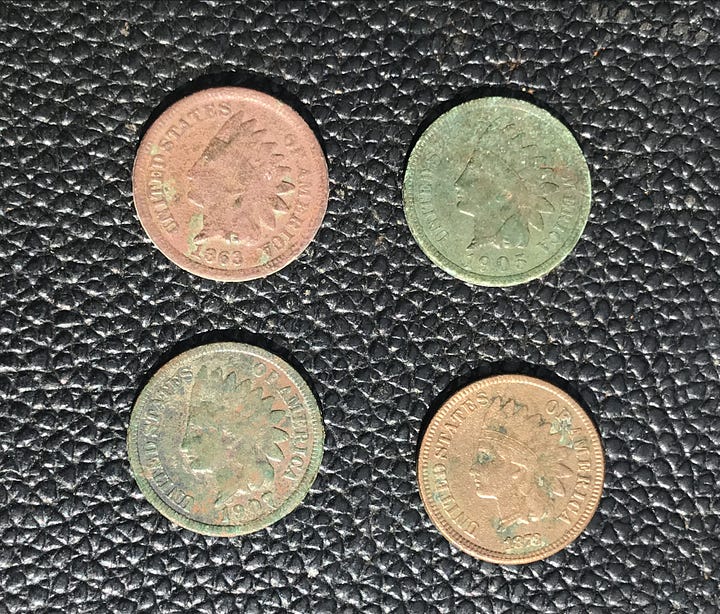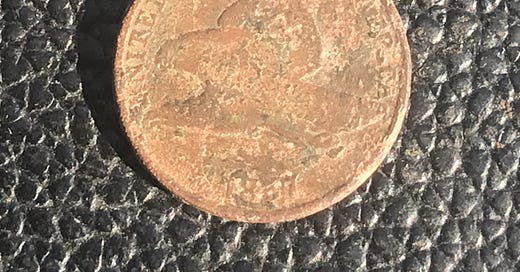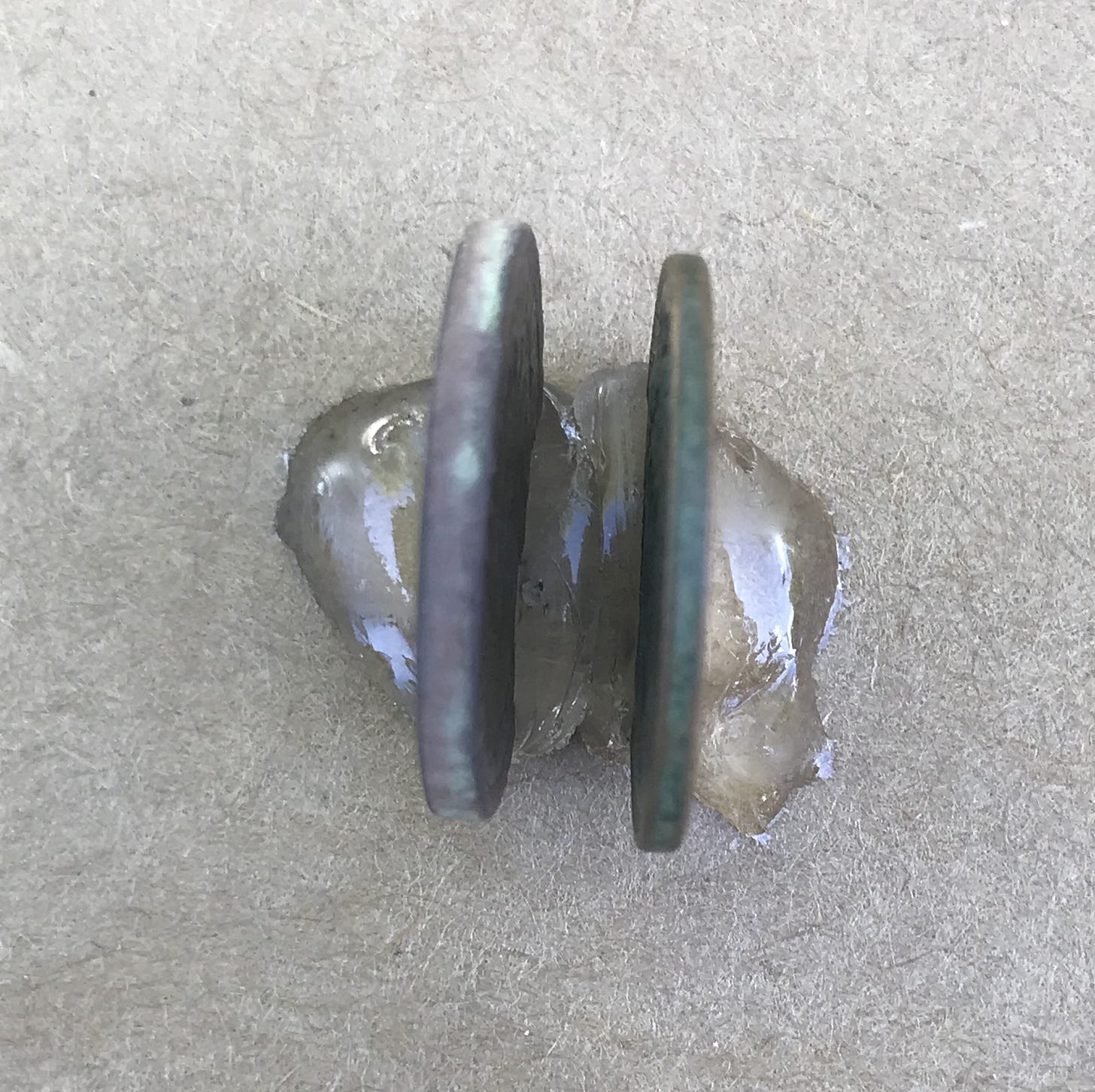Today’s blog—or more accurately, this month’s blog (I know, they’re getting further apart)—is going to be a continuation of my May 21 blog titled “Colonial British and Early American Copper Coins.” Today, I want to talk about small U.S. denomination coins. I ended the May 21st blog on United States large cents. The large cent was last minted in 1857, and only about 1/3 of a million were minted that year, which is a very small mintage for a U.S. coin.
The first small cent (19mm, which is the same size as our modern pennies) began production in 1856 with a miniscule mintage of 2,500. Most of these coins were intended for congressman and other VIP’s. Very few made it into circulation. I don’t have one of these yet, but one in even bad condition (as long as the date can be read) is worth at least $5000.



This earliest small cent is known as the Flying Eagle as it depicts an eagle in flight on the obverse. The reverse features a wreath of cotton, corn, wheat, and tobacco enclosing the word One Cent. As I mentioned earlier, they were the same diameter as today’s cents, but were about 50% thicker. They were only minted for 3 years, 1856-1858. Also, unlike today’s pennies which until 1982 were 95% copper and 5% zinc (bronze), they were 88% copper and 12% nickel. It is widely regarded that the short mintage years were because of striking problems due to the too-high relief of the design, with the eagle’s head and tail opposite strong wreath details on the reverse.


Following the Flying Eagle, came the Indian Head cent—or more accurately, a representation of Liberty wearing a Native American headdress. These were minted from 1859 until 1909, when the current Lincoln cent began production. From 1859 until mid-1864, as with the flying eagle, these coins were thicker than today’s cents. These thicker coins are referred to as “fatties” by detectorists. They also had 12% nickel in their makeup.
Sometime in 1864, and continuing through 1982, these were replaced with 95% copper and struck on thinner planchets*. (Except in 1943, when pennies were made from steel because of the War.) Just for the record, starting in 1982 cents were struck on copper plated zinc planchets and they deteriorate rather quickly.

In 1864 the mint began producing a bronze 2-cent piece. It is 23 mm in diameter which is slightly larger than a modern-day nickel. It shows a shield on the obverse and 2 CENTS inside a wreath on the reverse. The motto IN GOD WE TRUST appeared for the first time on a coin. The 2-cent coin is one of the shortest-lived issues of U.S. coinage. It was only minted for nine years with the last three years having very low mintage. It became unpopular with the public because of the 3-cent coin and the nickel.


The smallest of the United States silver coins, called the trime by the Treasury Department began production in 1851 and lasted until 1872. They are 14 mm in diameter and very thin. Composition is 75% silver and 25% copper, while all other U.S. silver coins are 90% silver and 10% copper. The 1853 specimen that I found is my oldest U.S. silver coin.


In 1865 the mint started making a copper-nickel (75%-25%) 3-cent piece because the silver counterpart was being hoarded by the public. They were slightly larger than the silver version.
*Planchets are the blanks on which coins are struck.





Interesting post! Also I learned the meaning of the word planchet. I hope we don't have to wait a month for the next one!